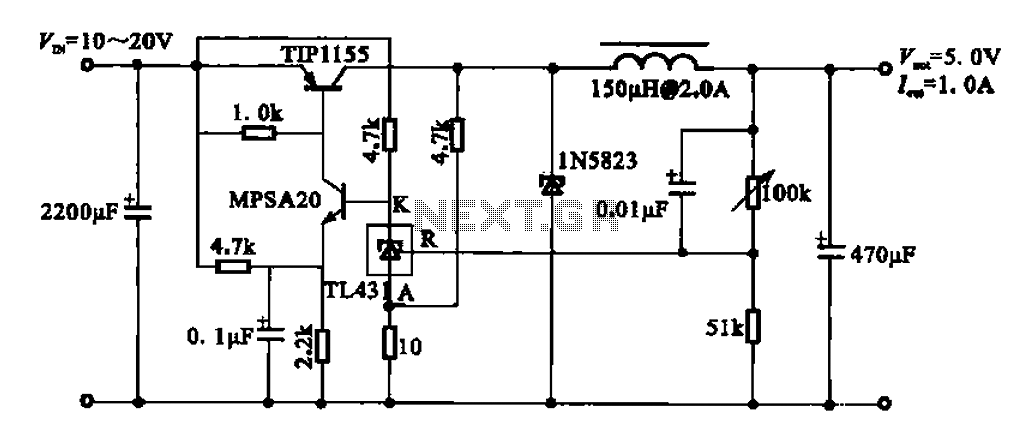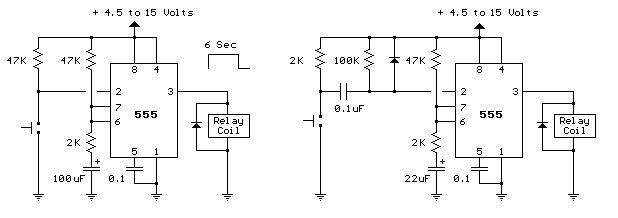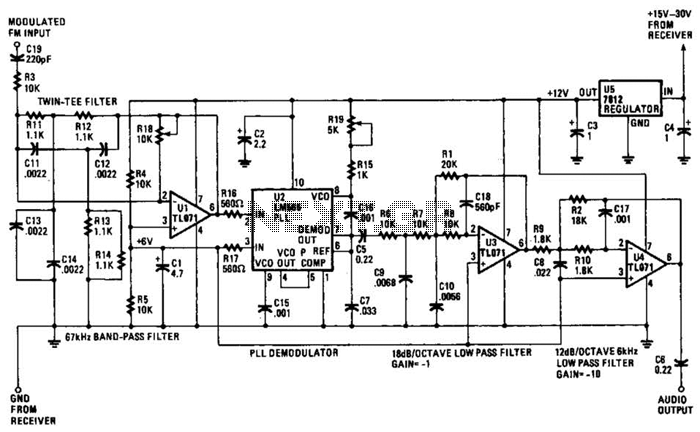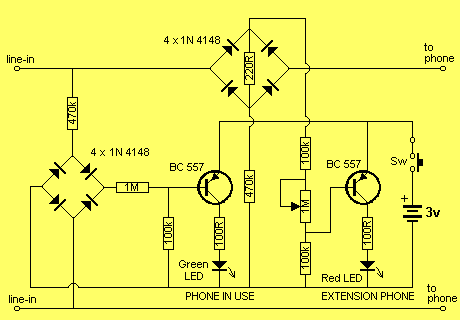
5V regulator circuit

The 5V regulator circuit is designed to convert a DC input voltage ranging from 10V to 20V into a stable 5V output. This circuit features low power consumption and high efficiency.
The 5V regulator circuit typically employs a linear voltage regulator or a switching regulator topology to achieve the desired output voltage. In a linear regulator configuration, the circuit uses components such as a pass transistor, resistive feedback network, and bypass capacitors to maintain the output voltage at 5V. The input voltage, which can vary between 10V and 20V, is fed into the regulator, where the excess voltage is dissipated as heat, making thermal management a consideration in the design.
For improved efficiency, especially in applications where power dissipation is a concern, a switching regulator may be utilized. This type of regulator operates by rapidly switching the input voltage on and off, using an inductor and a diode to store and release energy, thereby minimizing power loss. The output voltage is regulated by adjusting the duty cycle of the switching signal.
In both configurations, the circuit may include additional components such as input and output capacitors to filter out noise and stabilize the voltage levels. The choice between a linear and switching regulator depends on the specific application requirements, including load current, efficiency, and thermal performance.
Overall, the 5V regulator circuit is essential in various electronic applications, providing a reliable and stable power supply for microcontrollers, sensors, and other low-voltage devices.5V regulator circuit Is 5v regulator circuit, the circuit consists of a 5v voltage 10-20V DC power, low-power self-consumption and high efficiency.
The 5V regulator circuit typically employs a linear voltage regulator or a switching regulator topology to achieve the desired output voltage. In a linear regulator configuration, the circuit uses components such as a pass transistor, resistive feedback network, and bypass capacitors to maintain the output voltage at 5V. The input voltage, which can vary between 10V and 20V, is fed into the regulator, where the excess voltage is dissipated as heat, making thermal management a consideration in the design.
For improved efficiency, especially in applications where power dissipation is a concern, a switching regulator may be utilized. This type of regulator operates by rapidly switching the input voltage on and off, using an inductor and a diode to store and release energy, thereby minimizing power loss. The output voltage is regulated by adjusting the duty cycle of the switching signal.
In both configurations, the circuit may include additional components such as input and output capacitors to filter out noise and stabilize the voltage levels. The choice between a linear and switching regulator depends on the specific application requirements, including load current, efficiency, and thermal performance.
Overall, the 5V regulator circuit is essential in various electronic applications, providing a reliable and stable power supply for microcontrollers, sensors, and other low-voltage devices.5V regulator circuit Is 5v regulator circuit, the circuit consists of a 5v voltage 10-20V DC power, low-power self-consumption and high efficiency.




